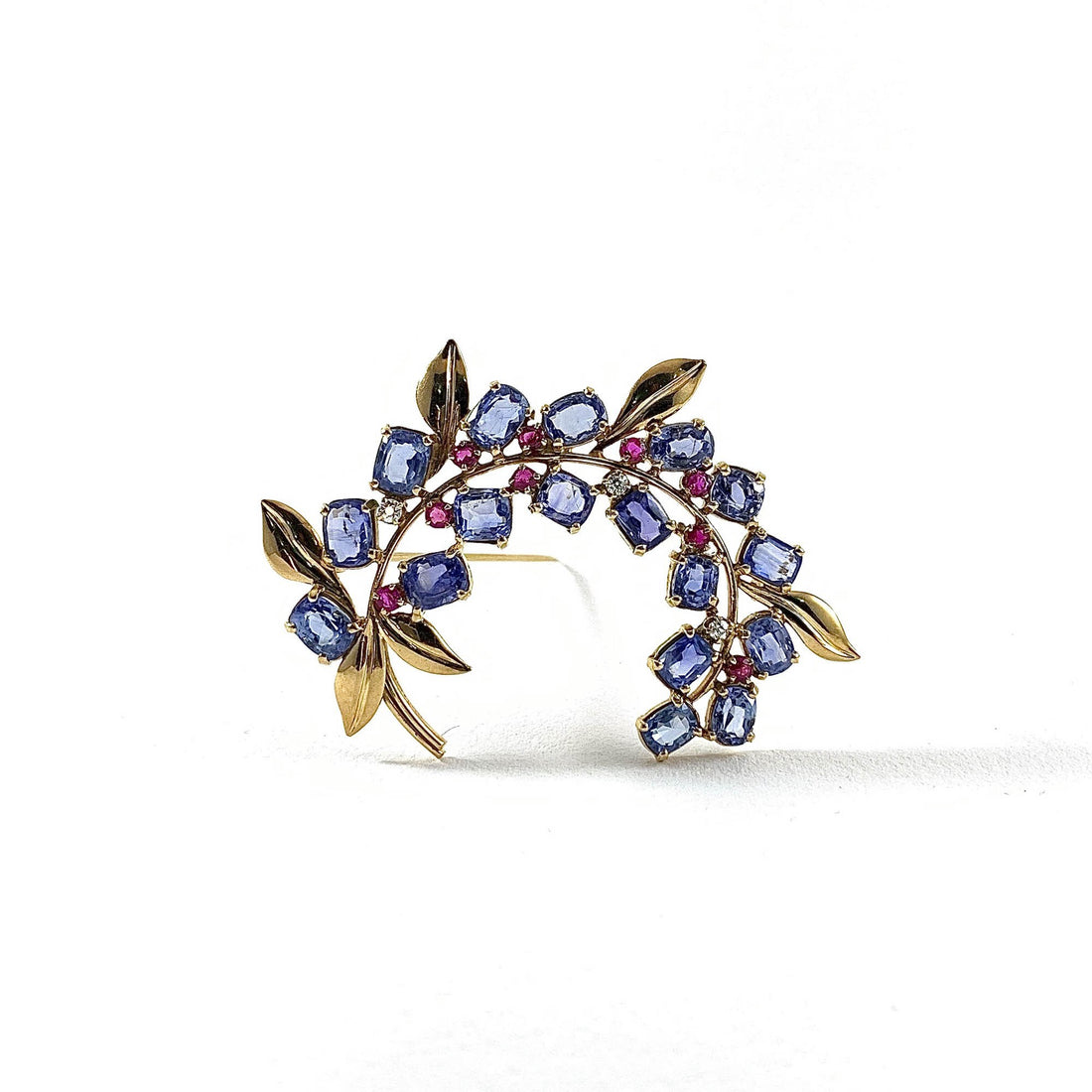Above: Sapphire, diamond and ruby brooch available in the shop.
September’s birthstone offers a rainbow of colors to choose from and has a hardness that is second only to diamonds. Sapphires are a form of the mineral corundum, and rubies are simply the red version of sapphires. This gemstone is a perfect choice for any jewelry that is subject to daily wear!
The most well-known sources for sapphires have been Sri Lanka, Kashmir, Burma, Madagascar, and Australia. Thailand is also a great source, as well as Montana in the USA.

One of the more well-known sapphires is the 12ct oval blue sapphire that was set with diamonds surrounding it in the engagement ring of Princess Diana. Now, it is worn by Kate Middleton the Duchess of Cambridge.
September’s birthstone has been popular in jewelry since the Middle Ages. Ceylon (now known as Sri Lanka) is known for its high-quality sapphires as far back as 2nd Century A. D. These sapphires are prized for their vivid color, which tends to be a much brighter blue than the dark sapphires from Thailand and Australia. Some of the most famous sapphires are Ceylon sapphires, including the Star of India (563cts).

SAPPHIRES REPRESENT TRUTH AND SINCERITY.
They also represented heaven due to their blue color and were thought to attract favor from the gods. Considered to have powers to help you have the clarity to reach your goals, in ancient Persia, it was believed that the earth rested on a giant sapphire, which made the sky blue. Another bit of folklore, back in the 15th century, it was thought that if you held a sapphire near a spider, it would kill it!
One important thing to note when considering purchasing a sapphire is to ask if it was treated and by what method. Traditionally, sapphires are often heated to improve their clarity or color, and the results are permanent. This is a well-accepted type of treatment in the jewelry trade. Treatments such as fracture-filling (to improve clarity), lattice diffusion (to improve color), and dyeing are less common. Still, these sapphires are easily found on the open market and may require special care. Ensure you know what type of treatment your sapphire may have received so that you can understand how to properly care for them.
When in doubt, the safest choice for cleaning your sapphire is warm, soapy water for untreated, heat-treated, and lattice-diffusion stones. A damp cloth should work for any sapphire that is dyed or fracture-filled.
Whether you choose a velvety blue or cornflower blue sapphire, a hot pink or golden sapphire, or the rarest “padparadscha” orange-pink sapphire, you can wear them safely every day. With so many colors to choose from–and color change sapphires too–you can choose one to suit every mood!

